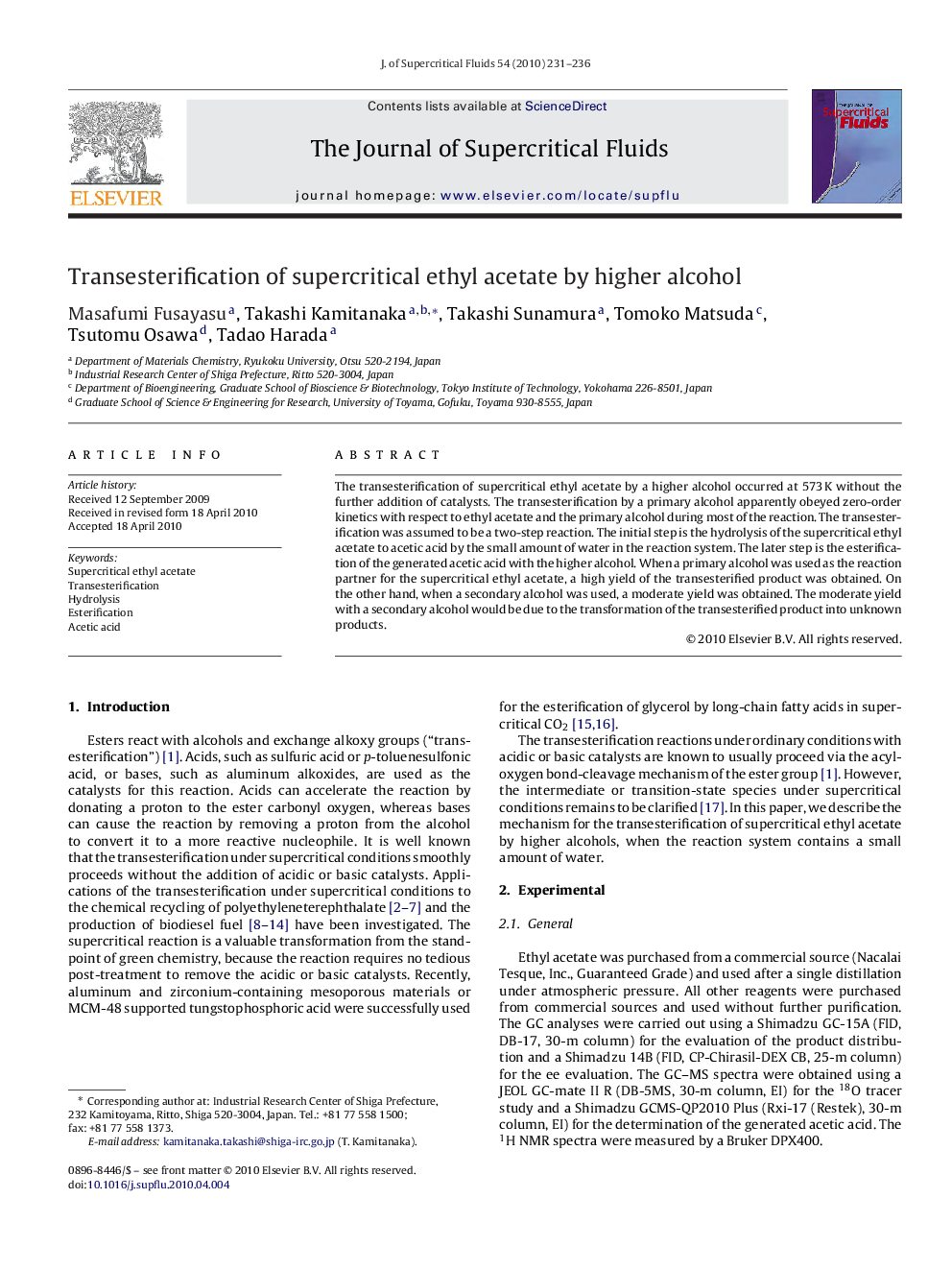| Article ID | Journal | Published Year | Pages | File Type |
|---|---|---|---|---|
| 231484 | The Journal of Supercritical Fluids | 2010 | 6 Pages |
The transesterification of supercritical ethyl acetate by a higher alcohol occurred at 573 K without the further addition of catalysts. The transesterification by a primary alcohol apparently obeyed zero-order kinetics with respect to ethyl acetate and the primary alcohol during most of the reaction. The transesterification was assumed to be a two-step reaction. The initial step is the hydrolysis of the supercritical ethyl acetate to acetic acid by the small amount of water in the reaction system. The later step is the esterification of the generated acetic acid with the higher alcohol. When a primary alcohol was used as the reaction partner for the supercritical ethyl acetate, a high yield of the transesterified product was obtained. On the other hand, when a secondary alcohol was used, a moderate yield was obtained. The moderate yield with a secondary alcohol would be due to the transformation of the transesterified product into unknown products.
Graphical abstractFigure optionsDownload full-size imageDownload as PowerPoint slide
